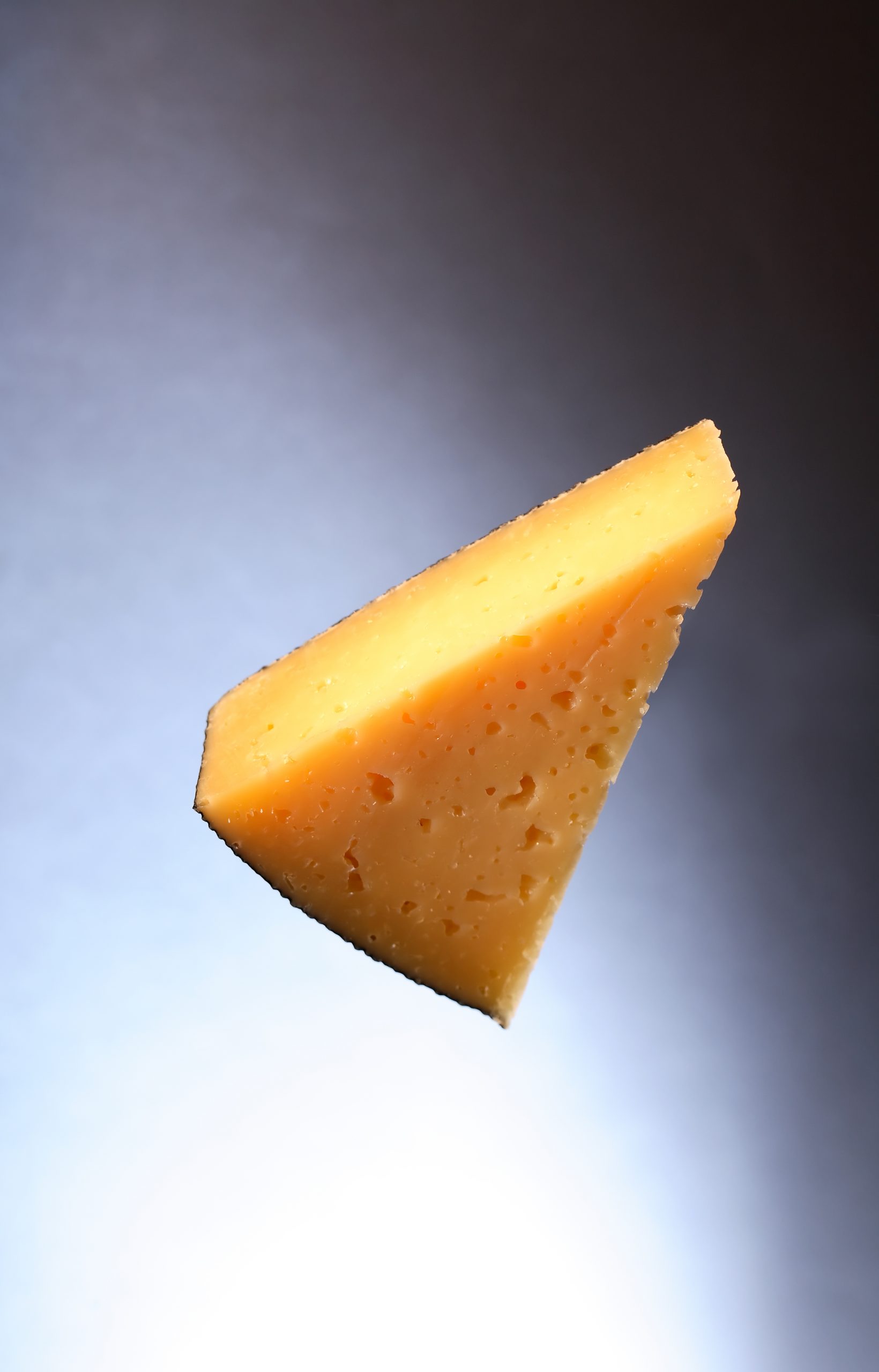“Although this decision is not monumental, it is instructive. Evidence of consumer perception goes a long way, but when the perception pervades governmental definitions and documents, it makes the evidence that much stronger.”
Following the widely discussed BOOKING.COM Supreme Court genericness case, the Trademark Trial and Appeal Board (Board) took up a genericness case of its own. Int’l. Dairy et al. v. Interprofessionnel du Gruy?re addresses whether a geographic certification mark for GRUYERE is generic for cheese or eligible for registration as a certification mark.
In addition to providing an extensive roadmap for how to prove a genericness claim, the case may also be of interest to food and beverage industry applicants seeking to obtain and enforce certification marks.
The TTAB Case
 Since at least as early as 1981, applicants Interprofession du Gruyère and Syndicat Interprofessionnel du Gruyère (collectively, “Applicants”) have respectively certified and produced GRUYERE cheese. By Applicants’ definition, GRUYERE cheese is a cheese that emanates from the Gruy?re region of Switzerland and France.
Since at least as early as 1981, applicants Interprofession du Gruyère and Syndicat Interprofessionnel du Gruyère (collectively, “Applicants”) have respectively certified and produced GRUYERE cheese. By Applicants’ definition, GRUYERE cheese is a cheese that emanates from the Gruy?re region of Switzerland and France.
In September 2015, Applicants, who also own a non-certification, use-based registration for the design mark, (which was not opposed, nor has cancellation been sought), applied to register GRUYERE as a certification mark for cheese. If approved, it would give Applicants rights through which they could certify cheeses as authentic GRUYERE cheese and preclude non-certified users from using the term to describe their cheeses. Opposers, International Dairy Foods Association (whose opposition was dismissed for lack of standing), U.S. Dairy Export Council, Atalanta Corporation, and Intercibus Inc. (collectively, “Opposers”) opposed this application on the grounds that GRUYERE is generic for a type of cheese.
Opposers submitted the traditional evidence to show that the public perceived GRUYERE as a type of cheese with holes rather than a cheese emanating from a specific region in Switzerland or France (e.g., definitions of GRUYERE, articles, catalogs, internet sources, all of which use GRUYERE to describe non-region specific cheeses). It was the Opposer’s USDA and FDA evidence, however, that the Board appears to have found particularly persuasive.
The FDA defines GRUYERE cheese generally as a mild-flavored cheese with small holes or eyes, a minimum 45% milkfat content, and aged at least 90 days. Nowhere in the definition does it include information about the region from which the cheese emanates. Similarly, the USDA evidence showed cheese identified as GRUYERE is imported from a wide variety of regions other than France or Switzerland, including Germany, Italy, the Czech Republic, and Egypt. The Board placed weight on the existence of these definitions and the absence of any specific geographic source reference. (Interestingly, the FDA definition for ROQUEFORT blue cheese, which does have a valid certification mark registration, also does not include details about the region from which it emanates.)
The Board also found the relatively limited enforcement of Applicants’ rights in GRUYERE persuasive. For instance, although Applicants showed they successfully stopped some producers from selling their own brand of cheese as GRUYERE, it did not stop third-party purchasers of that same producer’s cheese from using GRUYERE in their own branding.
The Board found Opposers met their burden of proving genericness by a preponderance of the evidence and refused registration of the GRUYERE mark.
Although this decision is not monumental, it is instructive. Evidence of consumer perception goes a long way, but when the perception pervades governmental definitions and documents, it makes the evidence that much stronger.
Protecting Geographic Certification Marks
It is in the best economic interest for producers of high-quality goods to seek exclusive rights on production (think ROQUEFORT blue cheese, CHAMPAGNE sparkling wine, etc.), and the GRUYERE case acts as a warning to those hoping to capitalize on the certification of goods, especially based on geographic indicators.
The difficulty in protecting these marks lies chiefly in the fact that geographically descriptive marks cannot be protected until the mark has acquired distinctiveness and secondary meaning to consumers. Although there is a presumption of acquired distinctiveness after five years of substantially exclusive and continuous use of the mark, acquired distinctiveness can be established earlier. An acquired distinctiveness claim based on five or more years of use can also be rebutted, especially in cases of highly descriptive marks.
The ability to establish acquired distinctiveness and/or respond to a rebuttal of the acquired distinctiveness claim rests largely on what affirmative steps a party takes to create recognition in consumers’ minds of its designation as a mark (certification or otherwise).
To start, those interested in certifying goods from a certain region should consider where they want to expand certification of products early in the process. Generally, most geographic certification marks emanate from outside the United States. In the case of GRUYERE, the gap between when the Applicants began certifying cheese and when they sought protection in the United States was over 30 years. Because cheese identified as GRUYERE was being shipped to and produced in the United States for much of that time, the process of genericide was in motion long before Applicants sought protection of their certification mark.
Once a party determines it would like to expand into the United States, it is important to get buy-in from the industry and to begin advertising and building consumer recognition early. Formation of associations and coalitions willing to recognize and abide by the certification requirements, paired with education of consumers and tradespeople, can help the certification mark to acquire distinctiveness and build a reputation.
As a party advertises and acquires distinctiveness, it should also actively monitor for and enforce against improper uses of the certification mark. This includes monitoring FDA labeling publications and submitting complaints for mislabeled products, conducting periodic reviews of catalogs and trade publications and, of course, addressing misuse in the marketplace.
What to Do if Genericness Occurs
If, despite best efforts, a party’s geographic mark falls victim to genericide, a party can still use a trademark which is applied to products emanating from a geographic region; however, it would likely need to be a design mark with some or all of the wording disclaimed. For instance, the Applicants’ mark can still be used to designate cheese that emanates from the Gruy?re region, which still has value for those looking for an “original” GRUYERE cheese. In the same way Applicant Syndicat Interprofessionnel du Gruyère is an association of parties involved in the production of GRUYERE, other parties can create consortiums whose purpose is to produce the products the parties seek to certify and use a mark to designate products emanating from that consortium. While not a certification per se, like a geographic certification, this consortium approach effectively distinguishes the high quality of a party’s goods in a way that attracts the attention of consumers.
Get Creative
It is likely we will continue to see genericness arise in food and beverage certification marks, especially for geographic certification marks; but through early advertising, coalition building, enforcement, and education, it is possible to avoid genericness. And, if not, a little creative thinking can still distinguish your products for consumers.

![[IPWatchdog Logo]](https://ipwatchdog.com/wp-content/themes/IPWatchdog%20-%202023/assets/images/temp/logo-small@2x.png)


![[Advertisement]](https://ipwatchdog.com/wp-content/uploads/2024/04/Patent-Litigation-Masters-2024-sidebar-early-bird-ends-Apr-21-last-chance-700x500-1.jpg)

![[Advertisement]](https://ipwatchdog.com/wp-content/uploads/2021/12/WEBINAR-336-x-280-px.png)
![[Advertisement]](https://ipwatchdog.com/wp-content/uploads/2021/12/2021-Patent-Practice-on-Demand-recorded-Feb-2021-336-x-280.jpg)
![[Advertisement]](https://ipwatchdog.com/wp-content/uploads/2021/12/Ad-4-The-Invent-Patent-System™.png)







Join the Discussion
One comment so far.
A. Nony Mous
September 7, 2020 05:23 am“GRUYERE cheese is a cheese that emanates from the Gruy?re region of Switzerland and France”
No, it isn’t. Gruyère is a village in the canton of Fribourg in Switzerland. France is a long way (in Swiss terms) down the road.